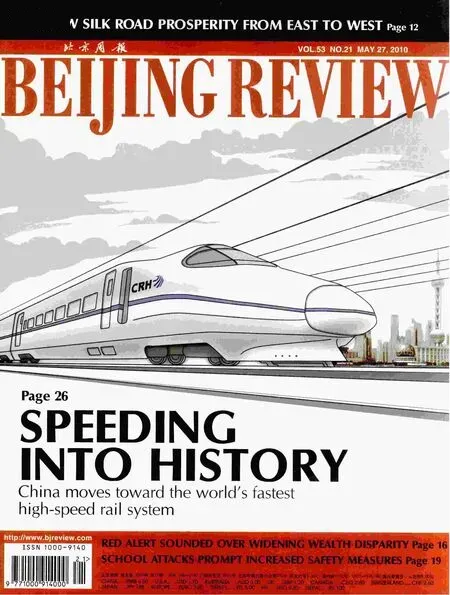April Showers Bring Inflation Flowers
By HU YUE
April Showers Bring Inflation Flowers
By HU YUE
While the Chinese economy regains momentum, anxieties remain constant as the seeds of inflation may be growing
Nearly two years after the devastating fnancial crisis, China’s green shoots of economic recovery are in full bloom. But economists still worry about inflation, as prices across the board remain unstable.
The consumer price index (CPI), an effective gauge of infation, rose 2.8 percent year on year in April, hitting an 18-month record.
The producer price index (PPI), an indicator of infation at the wholesale level, grew 6.8 percent in April, 0.9 percentage points higher than in March.
Yao Jingyuan, chief economist of the National Bureau of Statistics, attributed the April CPI growth mainly to rising food prices.
Food prices, which account for about one third of the CPI’s weight, rose 5.9 percent year on year during the month as cold weather impacted spring harvests and a severe drought in southwest China also hurt food supplies. Among the biggest rises of April food costs were vegetables and fruit prices that jumped 24.9 percent and 16.4 percent, respectively.
Yao said the CPI will continue to rise in the months to come given a weak comparison base in 2009.
It will be “diffcult but still possible” to meet the government-set target of an infation level around 3 percent for the whole year, he said.
But the challenges may be more daunting than expected. “Everything is on the rise in China, from wages to grain and vegetables, and we expect infation above 5 percent by the end of the year,” said Tao Dong, chief regional economist for non-Japan Asia at Credit Suisse.
The State Information Center, a thinktank under the National Development and Reform Commission (NDRC), also struck a note of caution. It predicted in a recent report that the CPI will jump 4.2 percent in the second quarter while the PPI soars 7 percent.
In a largely loose global monetary environment, commodity prices have been creeping up, feeding into China’s infationary pressures, said Li Daokui, an advisor to the central bank’s monetary policy committee and Director of the Center for China in the World Economy at Tsinghua University.
Meanwhile, many costal enterprises have suffered rising labor costs this year, and may therefore raise their product prices to maintain a proft margin, he added.
Liu Rui, an economics professor with the Renmin University of China, agreed, citing that infation will be the biggest problem for China in the second half of this year.
Peak housing prices have been forcing up residential factors, while surging producer prices will also leak into the CPI soon, said Liu.
Policymakers have taken every measure possible to preempt inflation. The central bank has required commercial banks to slow their pace of lending, and also drained cash from the banking system through open market operations. Most importantly, it has raised the reserve requirement ratio three times this year, pinching the banks’ ability to lend.
The vigorous efforts seem to be paying off. The growth of broad money supply (M2), which covers cash in circulation and all deposits, increased 21.48 percent year on year at the end of April, down from 22.5 percent at the end of March.
“Though still well above the government’s target of 17 percent for this year, the slowdown shows an improvement in soaking up the excess liquidity,” said Zuo Xiaolei, chief economist of Beijing-based China Galaxy Securities Co. Ltd. “But more tightening measures are still needed to manage infationary expectations.”
A recent report by the central bank suggested China should strengthen supplies of agricultural products given the weight of food prices in CPI.
In addition, austerity measures must be continued to clamp down on the property fever to hold down infationary expectations.
Meanwhile, it is also necessary to strike against speculation on the food market and also increase income of poor residents to help them withstand possible infation, said a report by the NDRC.

INFLATIONARY JITTERS: Food price increases have been the biggest reason for the rising CPI in recent months

